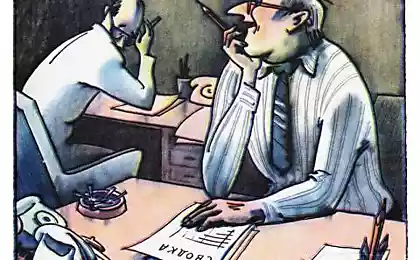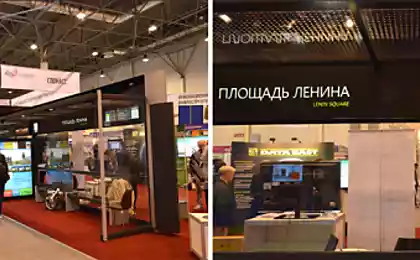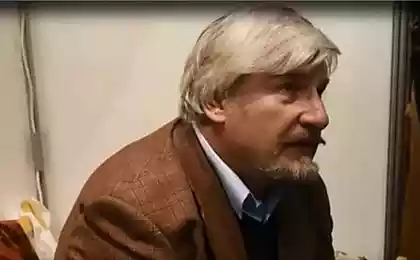977
Who is smarter - men or women? Are investigated on the basis of patent statistics
It is clear that the statistics - is a form of lying, but still the data of patent information of the relationship between sex composition of inventors surprise. What do you think, what proportion of men and women among the holders of patents? 50/50? No!

Abroad
According to foreign patent offices of female inventors is much less than men. According to the US Patent Office in only 10 patents 3% of at least one of the authors is female.
According to statistics from the European Patent Office data look even sadder: 8, 8% for patents from America, the highest rates in Spain (12, 3%) and France (10, 2%), and lowest for Austria (3, 2%) and Germany (4, 7%).
If you look at the statistics of patents that were commercially applicable, the gap is even greater - only 5, 5% of "female" patents.
What explains this bias?
According to Professor Toby Stuart (Haas School of Business at the University of California, Berkeley) in men more useful social relations for the realization of ideas.
The study «WHY DO NOT WOMEN PATENT?», Explains the gender gap in patenting different ratio of male and female professionals and scientists ostepenennyh lead detailed statistics. As a conclusion, they propose to increase the share of "women" patents that according to their calculations would lead to an increase in US GDP by 2, 7%.
There is also the historical roots of the problem. A woman for a long time (and to some extent now) was in an unequal social status with men, which is reinforced by the legal rules. Previously, women were significantly are clipped in the rights in favor of men. They could not even submit in its own name for a patent, because of their intellectual property is considered property of the husband.
There are visible and the difference in the level of physiology. In the book, the American scientist W. Bowerman list of thousands of geniuses has only 29 women (2, 9%).
Creative women's ability to give a low score:
Arthur Schopenhauer: a woman can not be a creator ...
Friedrich Nietzsche: a woman can not do ...
A woman can not be a genius in the opinion of Otto Weininger ...
Social taboos for women, not allowing them to become geniuses by Simone de Beauvoir
The intellect of women and men at MI Weller
The number of women of genius to evaluate AV Shuvalov
Restoring historical justice recall women inventors who contributed to the development of industry and make our lives more convenient.
Tabitha Babbitt
At the end of the XVIII century, the world learned of the Protestant religious sect by name "shakers". Important in the organization was improvement in her life. Between the sexes there was equality, evenly distributed and hard work.
In Massachusetts, it was also such a community, it is home to Tabitha Babbitt. She worked as a weaver, but in 1810 had found a way to make the job easier for his brothers.
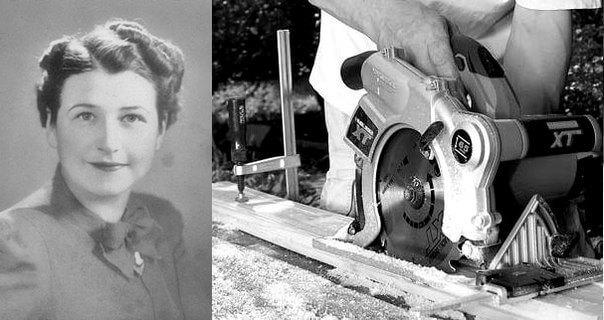
The woman stared as the man sawed logs two-handed saw, moving it in one direction or the other. Although the load on the people and was distributed evenly, but immediately cut only occurs if the forward blade. When moving back to the beam is not affected.
Tabitha quickly realized that people spend wasted power. She came up with a prototype of a circular saw. Later, she successfully started to use in the sawmill industry. Babbitt suggested the establishment of a saw with a circular blade. Now every movement of the tool on a tree to get a sense. But community commandments were quite strict, they prevented Babbitt get their legitimate patent.
Stephanie Kwolek
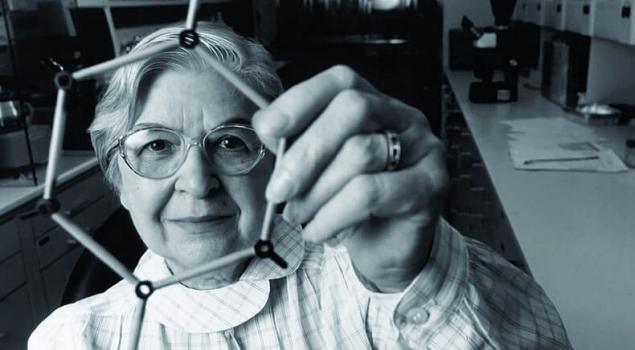
Stephanie Kwolek remained in history as the inventor of Kevlar.
Kevlar - is a special organic fiber which has an extraordinary strength, very good flexibility and light weight. For example - Kevlar is five times stronger than steel. And most Kevlar found its application in military uniforms - particularly in Kevlar body armor. And her invention saved many lives.
The most amazing thing that Kwolek worked at all in the military industry. She's just trying to find ... a substitute for rubber tires (it was just after the burst of the oil crisis).
Katherine Blodgett

The first woman scientist at General Electric, Katherine Blodgett in 1935 opened the way to transfer the monomolecular thin film on glass and metal. Result - glass, which shines not, and does not distort the image. It is a revolution in the production of cameras, microscopes, eyeglasses and more.
Josephine Koshren
The first dishwasher, patented in 1886, combines a boiler to heat water unit for feeding it under pressure, wheel and grille like the ones that are still used for drying dishes. Only 40 years later, Cochrane device was found necessary thing in the economy. Inventor, Josephine Koshren never used it myself, but greatly simplify the lives of their maids.
Nicole Barbe Clicquot
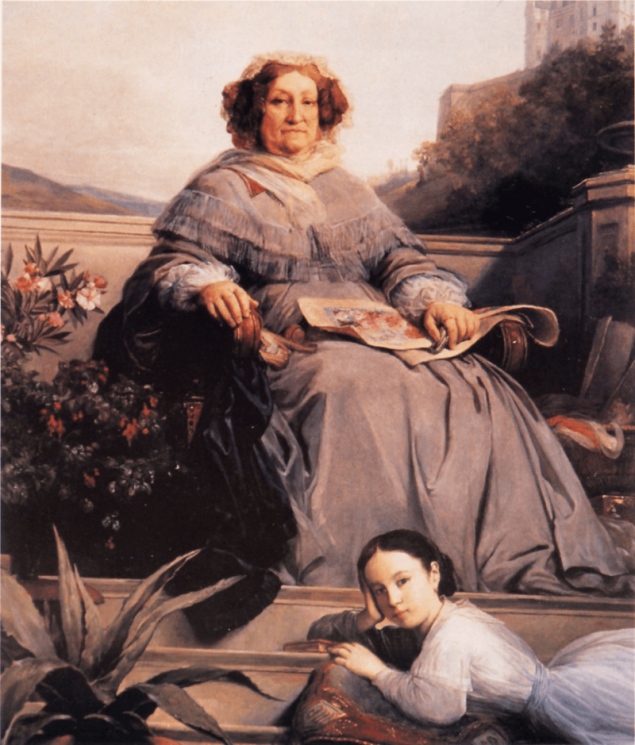
In 1808, developed the technology of "riddling", thanks to which the champagne gets rid of sludge for three months and it becomes crystal clear, it has had real success, greatly improving the quality of the beverage.
Mary Anderson
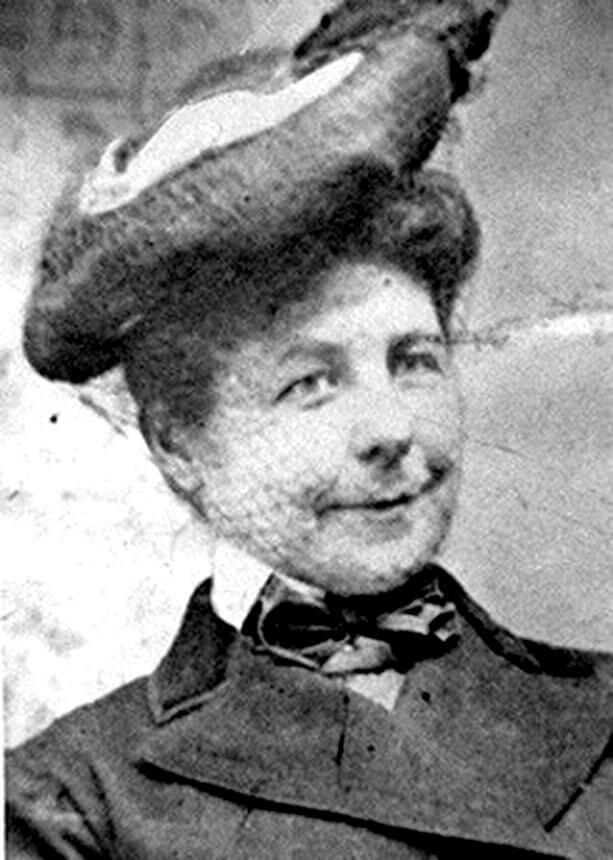
First wipers for car invented by Mary Anderson in 1903. She felt sorry for the driver, who was forced to constantly during the blizzard stopped the car and shoveling snow from the windscreen.
The most significant invention of the XX century that has had the greatest impact on people's lives - diapers on account of a woman (!).
Prior to this invention, the men just did not think of (as before the bra and means of female hygiene), as this is not their headache.
And in Russia?
Rospatent is not engaged in incitement to hatred and intersexual not give patents distribution statistics on male and female. In your own home, we felt the gender gap on the example of the last 50 issued by Russian patents.
He was about the same as in foreign patent offices - 12%. Moreover, a significant contribution to our sample, the proportion of women in the patent inventor brought from France. Interestingly, there is no "purely feminine patent."
The "Atlas of the history of Russian culture" (1993), covering the period from the end of XVII and the beginning of the XX century, mentioned in 2560 prominent figures of almost all branches of science and culture; 7, 7% of the total number of personalities - women. In the Great Soviet Encyclopedia of biographies of bulk (more than 1500 characters) appeared in 2107, of them - 66 women, which accounted for 3, 1%
. Moreover, it is appropriate to remember our outstanding female inventor.
Zinaida Yermolyeva - inventor of antibiotics

The scientist-microbiologist, Honored Scientist of the RSFSR, academician, laureate of the State Prize. Born October 24, 1898 on a farm Frolov, now Archeda station in a railway family. As a child, he was a cheerful disposition, sympathetic and kind, then grew up and became the first dancer. She liked "Sentimental Waltz" by Tchaikovsky and showed great interest in wildlife.
Inquisitive mind led Yermolyeva medical department of Rostov University, where she became involved in microbiology seriously: it was drawn to the unknown, which at that time there were many in this science. Her first work, "The biology of cholera epidemic on materials for 1922 in Rostov-on-Don" and then poured into a large monograph, a long time to determine its scientific future.
The path to science was thorny. Yermolyeva interested cholera vibrios and decided to carry out an experiment on yourself: Take on an empty stomach four billion microbial bodies of the vibrio. Developed a classic picture of the cholera disease, but young body withstood the test. Soon, from the pen of 3 V. Yermolyeva out large monograph «Cholera».
In 1942, when Stalingrad became a front-line point for evacuees, here it was aimed professor Yermolyeva to prevent cholera population. Extraordinary Commission headed by Deputy People's Commissar of Health. All measures have been taken: the production of cholera bacteriophage was established in Stalingrad. 50 thousand people daily receive this life-saving vaccine - it was truly a feat of Soviet medics, medicine feat. Six months spent in the besieged Stalingrad Yermolyeva.
To see the new and most important - it was the main feature of the scientific. The most necessary during the war was to help the wounded, died from sepsis. The intense, night work in the laboratory - and Yermolyeva team gets the first domestic penicillin. But Yermolyeva not only got it, but it has developed industrial production, which was saved from certain death thousands of lives of our soldiers.
After the war, and Yermolyeva among those who build. Among builders channel Volga-Don she was preventive work against epidemics. It belongs to her leadership in the study of interferon as an antiviral agent. Zinaida Vissarionovna knew well in Stalingrad, Astrakhan, she performed in Paris, Prague, Geneva, represented the Soviet science was an active public figure.
Two Orders of Lenin, including for work in Stalingrad, for its scientific achievement, the Order of Red Banner of Labor, the Order "Badge of Honor" medal. Based on the life Yermolyeva wrote his "open book" writer AV Kaverin.
Anna Mezhlumova - Soviet chemist
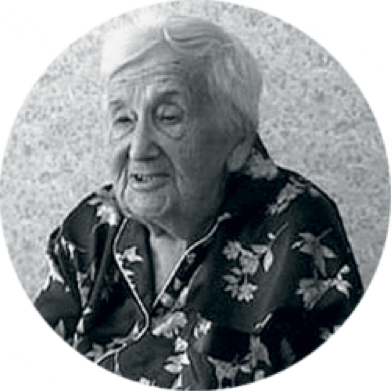
During Anna Mezhlumovoy experiments for the first time in history managed to get a high-octane gasoline.
It's no secret that the power source for an automobile engine is a liquid or gas fuel, usually gasoline. The most important indicator of its quality is the tendency to blasting, and this tendency is determined the so-called octane. And the higher it is, the less likely that the gasoline explodes.
Therefore, at present almost all the engines of modern cars run on high-octane gasoline (the famous 92-th and 95-th gasoline), which promotes the development of speed, faster acceleration and shorter amortization engine.
At the same time, unfortunately, the name Anna Mezhlumovoy almost nobody knows. In one of the last surviving an interview in 2006, Anna Ilinichna told that he lives with his son in a room in a communal, and is proud to be in 92 years still remembers all the chemical formula. More current information was not found on her.
Fatima Aslanbekovna Butaev

Fatima Aslanbekovna Butaev - Soviet physicist and inventor, winner of the Stalin Prize. Future researcher born in Alagir, her father Aslanbek Butaev- prominent lawyer and journalist, one of Costa Khetagurova, founder and editor of the first newspaper in the Ossetian language "Iron newspapers».
In 1925, Fatima Butaev entered Gorski Pedagogical Institute, then continued his studies in physics and mathematics department of the Second Moscow State University.
In 1934 she began her research activities voVsesoyuznom Electrotechnical Institute in the laboratory istochnikovsveta under the guidance of the outstanding scientist VA Fabrikant. Fatima Butaev gone from engineer to head of the laboratory.
Over the years, she led a group of scientists study the luminescence of different phosphors in the optical region of the spectrum. The practical result of this work - the development and early release of the first in the USSR fluorescent lamps or fluorescent lamps
. In 1951, Fatima Butaev involved in the invention of the first laser system - "pulse charging apparatus for light amplification." Soviet scientists have developed a method for amplification elektromagnitgnogo radiation, which is now used in all lasers.
This work in many ways ahead of its time and was recognized only years later, in 1964. When a group of scientists, including Butaev was Fatima, was given a diploma of scientific discovery.
Natalia Malysheva
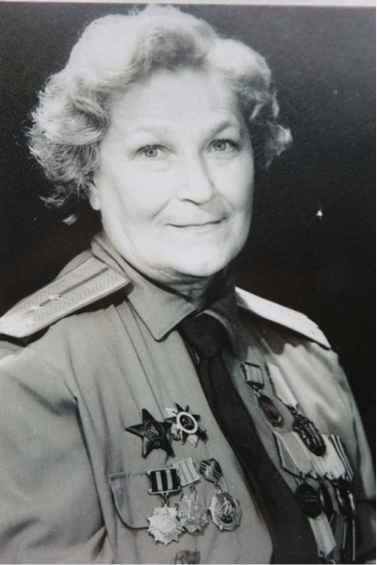
Natalia Malysheva (December 12, 1921, Crimea - February 4, 2012) - Soviet designer of rocket engines, later - a nun Adriana. NV Malyshev was born in the Crimea, in the family of a local doctor. Since childhood engaged in swimming and gymnastics, cross-country skiing, shooting. She graduated from the courses nurses passed the TRP rates. Malyshev entered the Moscow Aviation Institute.
In 1941 he went to the front. He served in the divisional intelligence on the Volokolamsk direction. In June 1942, it focused on the 3-month course at the school scouts Gireev. After they served in the military intelligence of the 16th Army (2 form), which was commanded by Rokossovsky. The war ended with a lieutenant.
After Victory until 1949 he served in Poland in Upper Silesia. In 1949 was transferred to Potsdam, was promoted to captain.
After retiring from the army, he returned to the MAI once the third year, he graduated and began to work on the distribution of the designer of rocket engines in NII-88 in Podlipki (now Korolev). Natalia has worked in this field for 35 years.
Design Engineer Malyshev participated in the creation of engines for maneuvering and braking in the orbit of the first ballistic missiles and spacecraft, including for Gagarin "East". She was the only woman in the State Commission for testing missile systems. NV Malyshev participated in the creation of rocket engines for anti-aircraft missile system S-75 Pyotr Grushin. For this engine it was awarded the Order.
Retired helped equip the courtyard of the Holy Dormition Pühtitsa convent in Moscow and remained there to serve a simple nun, taking the vows under the name Adrian. Mother Adriana became the winner of the international award "For Faith and Loyalty", established by the Foundation of St. Andrew.

Abroad
According to foreign patent offices of female inventors is much less than men. According to the US Patent Office in only 10 patents 3% of at least one of the authors is female.
According to statistics from the European Patent Office data look even sadder: 8, 8% for patents from America, the highest rates in Spain (12, 3%) and France (10, 2%), and lowest for Austria (3, 2%) and Germany (4, 7%).
If you look at the statistics of patents that were commercially applicable, the gap is even greater - only 5, 5% of "female" patents.
What explains this bias?
According to Professor Toby Stuart (Haas School of Business at the University of California, Berkeley) in men more useful social relations for the realization of ideas.
The study «WHY DO NOT WOMEN PATENT?», Explains the gender gap in patenting different ratio of male and female professionals and scientists ostepenennyh lead detailed statistics. As a conclusion, they propose to increase the share of "women" patents that according to their calculations would lead to an increase in US GDP by 2, 7%.
There is also the historical roots of the problem. A woman for a long time (and to some extent now) was in an unequal social status with men, which is reinforced by the legal rules. Previously, women were significantly are clipped in the rights in favor of men. They could not even submit in its own name for a patent, because of their intellectual property is considered property of the husband.
There are visible and the difference in the level of physiology. In the book, the American scientist W. Bowerman list of thousands of geniuses has only 29 women (2, 9%).
Creative women's ability to give a low score:
Arthur Schopenhauer: a woman can not be a creator ...
Friedrich Nietzsche: a woman can not do ...
A woman can not be a genius in the opinion of Otto Weininger ...
Social taboos for women, not allowing them to become geniuses by Simone de Beauvoir
The intellect of women and men at MI Weller
The number of women of genius to evaluate AV Shuvalov
Restoring historical justice recall women inventors who contributed to the development of industry and make our lives more convenient.
Tabitha Babbitt
At the end of the XVIII century, the world learned of the Protestant religious sect by name "shakers". Important in the organization was improvement in her life. Between the sexes there was equality, evenly distributed and hard work.
In Massachusetts, it was also such a community, it is home to Tabitha Babbitt. She worked as a weaver, but in 1810 had found a way to make the job easier for his brothers.

The woman stared as the man sawed logs two-handed saw, moving it in one direction or the other. Although the load on the people and was distributed evenly, but immediately cut only occurs if the forward blade. When moving back to the beam is not affected.
Tabitha quickly realized that people spend wasted power. She came up with a prototype of a circular saw. Later, she successfully started to use in the sawmill industry. Babbitt suggested the establishment of a saw with a circular blade. Now every movement of the tool on a tree to get a sense. But community commandments were quite strict, they prevented Babbitt get their legitimate patent.
Stephanie Kwolek

Stephanie Kwolek remained in history as the inventor of Kevlar.
Kevlar - is a special organic fiber which has an extraordinary strength, very good flexibility and light weight. For example - Kevlar is five times stronger than steel. And most Kevlar found its application in military uniforms - particularly in Kevlar body armor. And her invention saved many lives.
The most amazing thing that Kwolek worked at all in the military industry. She's just trying to find ... a substitute for rubber tires (it was just after the burst of the oil crisis).
Katherine Blodgett

The first woman scientist at General Electric, Katherine Blodgett in 1935 opened the way to transfer the monomolecular thin film on glass and metal. Result - glass, which shines not, and does not distort the image. It is a revolution in the production of cameras, microscopes, eyeglasses and more.
Josephine Koshren
The first dishwasher, patented in 1886, combines a boiler to heat water unit for feeding it under pressure, wheel and grille like the ones that are still used for drying dishes. Only 40 years later, Cochrane device was found necessary thing in the economy. Inventor, Josephine Koshren never used it myself, but greatly simplify the lives of their maids.
Nicole Barbe Clicquot

In 1808, developed the technology of "riddling", thanks to which the champagne gets rid of sludge for three months and it becomes crystal clear, it has had real success, greatly improving the quality of the beverage.
Mary Anderson

First wipers for car invented by Mary Anderson in 1903. She felt sorry for the driver, who was forced to constantly during the blizzard stopped the car and shoveling snow from the windscreen.
The most significant invention of the XX century that has had the greatest impact on people's lives - diapers on account of a woman (!).
Prior to this invention, the men just did not think of (as before the bra and means of female hygiene), as this is not their headache.
And in Russia?
Rospatent is not engaged in incitement to hatred and intersexual not give patents distribution statistics on male and female. In your own home, we felt the gender gap on the example of the last 50 issued by Russian patents.
He was about the same as in foreign patent offices - 12%. Moreover, a significant contribution to our sample, the proportion of women in the patent inventor brought from France. Interestingly, there is no "purely feminine patent."
The "Atlas of the history of Russian culture" (1993), covering the period from the end of XVII and the beginning of the XX century, mentioned in 2560 prominent figures of almost all branches of science and culture; 7, 7% of the total number of personalities - women. In the Great Soviet Encyclopedia of biographies of bulk (more than 1500 characters) appeared in 2107, of them - 66 women, which accounted for 3, 1%
. Moreover, it is appropriate to remember our outstanding female inventor.
Zinaida Yermolyeva - inventor of antibiotics

The scientist-microbiologist, Honored Scientist of the RSFSR, academician, laureate of the State Prize. Born October 24, 1898 on a farm Frolov, now Archeda station in a railway family. As a child, he was a cheerful disposition, sympathetic and kind, then grew up and became the first dancer. She liked "Sentimental Waltz" by Tchaikovsky and showed great interest in wildlife.
Inquisitive mind led Yermolyeva medical department of Rostov University, where she became involved in microbiology seriously: it was drawn to the unknown, which at that time there were many in this science. Her first work, "The biology of cholera epidemic on materials for 1922 in Rostov-on-Don" and then poured into a large monograph, a long time to determine its scientific future.
The path to science was thorny. Yermolyeva interested cholera vibrios and decided to carry out an experiment on yourself: Take on an empty stomach four billion microbial bodies of the vibrio. Developed a classic picture of the cholera disease, but young body withstood the test. Soon, from the pen of 3 V. Yermolyeva out large monograph «Cholera».
In 1942, when Stalingrad became a front-line point for evacuees, here it was aimed professor Yermolyeva to prevent cholera population. Extraordinary Commission headed by Deputy People's Commissar of Health. All measures have been taken: the production of cholera bacteriophage was established in Stalingrad. 50 thousand people daily receive this life-saving vaccine - it was truly a feat of Soviet medics, medicine feat. Six months spent in the besieged Stalingrad Yermolyeva.
To see the new and most important - it was the main feature of the scientific. The most necessary during the war was to help the wounded, died from sepsis. The intense, night work in the laboratory - and Yermolyeva team gets the first domestic penicillin. But Yermolyeva not only got it, but it has developed industrial production, which was saved from certain death thousands of lives of our soldiers.
After the war, and Yermolyeva among those who build. Among builders channel Volga-Don she was preventive work against epidemics. It belongs to her leadership in the study of interferon as an antiviral agent. Zinaida Vissarionovna knew well in Stalingrad, Astrakhan, she performed in Paris, Prague, Geneva, represented the Soviet science was an active public figure.
Two Orders of Lenin, including for work in Stalingrad, for its scientific achievement, the Order of Red Banner of Labor, the Order "Badge of Honor" medal. Based on the life Yermolyeva wrote his "open book" writer AV Kaverin.
Anna Mezhlumova - Soviet chemist

During Anna Mezhlumovoy experiments for the first time in history managed to get a high-octane gasoline.
It's no secret that the power source for an automobile engine is a liquid or gas fuel, usually gasoline. The most important indicator of its quality is the tendency to blasting, and this tendency is determined the so-called octane. And the higher it is, the less likely that the gasoline explodes.
Therefore, at present almost all the engines of modern cars run on high-octane gasoline (the famous 92-th and 95-th gasoline), which promotes the development of speed, faster acceleration and shorter amortization engine.
At the same time, unfortunately, the name Anna Mezhlumovoy almost nobody knows. In one of the last surviving an interview in 2006, Anna Ilinichna told that he lives with his son in a room in a communal, and is proud to be in 92 years still remembers all the chemical formula. More current information was not found on her.
Fatima Aslanbekovna Butaev

Fatima Aslanbekovna Butaev - Soviet physicist and inventor, winner of the Stalin Prize. Future researcher born in Alagir, her father Aslanbek Butaev- prominent lawyer and journalist, one of Costa Khetagurova, founder and editor of the first newspaper in the Ossetian language "Iron newspapers».
In 1925, Fatima Butaev entered Gorski Pedagogical Institute, then continued his studies in physics and mathematics department of the Second Moscow State University.
In 1934 she began her research activities voVsesoyuznom Electrotechnical Institute in the laboratory istochnikovsveta under the guidance of the outstanding scientist VA Fabrikant. Fatima Butaev gone from engineer to head of the laboratory.
Over the years, she led a group of scientists study the luminescence of different phosphors in the optical region of the spectrum. The practical result of this work - the development and early release of the first in the USSR fluorescent lamps or fluorescent lamps
. In 1951, Fatima Butaev involved in the invention of the first laser system - "pulse charging apparatus for light amplification." Soviet scientists have developed a method for amplification elektromagnitgnogo radiation, which is now used in all lasers.
This work in many ways ahead of its time and was recognized only years later, in 1964. When a group of scientists, including Butaev was Fatima, was given a diploma of scientific discovery.
Natalia Malysheva

Natalia Malysheva (December 12, 1921, Crimea - February 4, 2012) - Soviet designer of rocket engines, later - a nun Adriana. NV Malyshev was born in the Crimea, in the family of a local doctor. Since childhood engaged in swimming and gymnastics, cross-country skiing, shooting. She graduated from the courses nurses passed the TRP rates. Malyshev entered the Moscow Aviation Institute.
In 1941 he went to the front. He served in the divisional intelligence on the Volokolamsk direction. In June 1942, it focused on the 3-month course at the school scouts Gireev. After they served in the military intelligence of the 16th Army (2 form), which was commanded by Rokossovsky. The war ended with a lieutenant.
After Victory until 1949 he served in Poland in Upper Silesia. In 1949 was transferred to Potsdam, was promoted to captain.
After retiring from the army, he returned to the MAI once the third year, he graduated and began to work on the distribution of the designer of rocket engines in NII-88 in Podlipki (now Korolev). Natalia has worked in this field for 35 years.
Design Engineer Malyshev participated in the creation of engines for maneuvering and braking in the orbit of the first ballistic missiles and spacecraft, including for Gagarin "East". She was the only woman in the State Commission for testing missile systems. NV Malyshev participated in the creation of rocket engines for anti-aircraft missile system S-75 Pyotr Grushin. For this engine it was awarded the Order.
Retired helped equip the courtyard of the Holy Dormition Pühtitsa convent in Moscow and remained there to serve a simple nun, taking the vows under the name Adrian. Mother Adriana became the winner of the international award "For Faith and Loyalty", established by the Foundation of St. Andrew.
How to get out of the position of trouble
7 delicious dinners, for which you will spend less than 20 minutes
